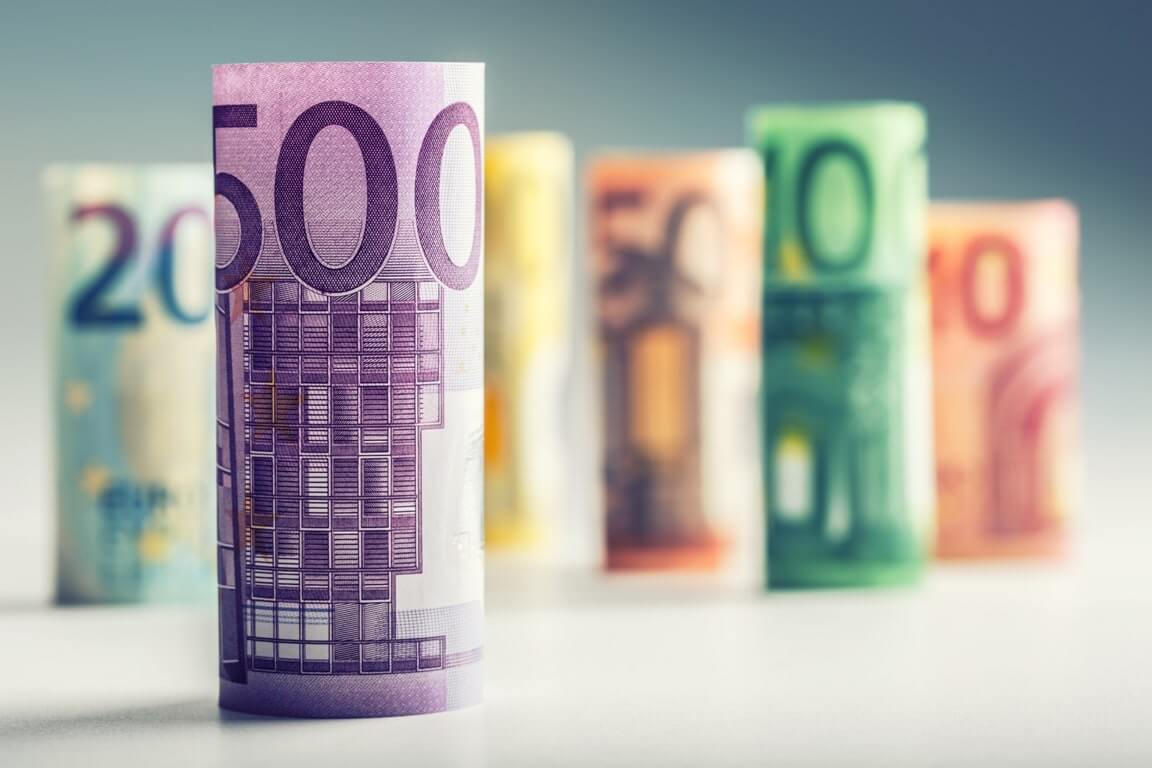
U.S. dollar fell on Monday. What about euro and sterling?
The greenback declined today. The U.S. dollar index plummeted by 0.14% to 103.83 against the basket of six major currencies. Despite that, the dollar remained near its six-week high hit on Friday. Overall, the currency skyrocketed by almost 8% for February. It seems set to end the month with gains for the first time since September.
The greenback jumped to 104.67 on Friday due to strong economic data. Several positive reports showed that the American economy is far from a recession and remains resilient despite the Fed’s aggressive interest rate hikes.
Investors thought that the U.S. central bank might slow down to avoid going into an economic recession. However, now they think that the Fed will continue raising rates, at least in the near term.
In the United States, markets closed for Presidents’ Day. Thus, traders expected the liquidity to thin. The latest data showed that the world’s largest economy’s labor market is still tight. Robust producer prices and higher retail sales also encouraged market participants. The Federal Reserve still needs to lower inflation in the country. And tightening its policy is the best way to do that. FX markets expect the agency to announce new hikes soon. Interest rates might peak near 5.3% by July 2023.
What do the analysts say?
Chris Turner, the global head of markets at ING, noted that the greenback moved considerably higher this month. However, he thinks that the dollar’s rally has hit its peak, and the currency will likely start trading relatively lower soon.
Fed officials made hawkish comments recently, bolstering the U.S. currency. They hinted that the central bank was contemplating higher rate hikes to bring down inflation.
Furthermore, two European Central Bank policymakers announced on Friday that the ECB also plans to increase rates in Eurozone. Despite such comments, the euro traded in the red on Friday, hitting a low of $1.06125. The common currency remained flat today, as well. It changed slightly at $1.0694, gaining a bit but still trading near its recent low.
ING’s Turner noted that the United States would likely continue its attempts to lower inflation in the second quarter, and it might just succeed. On the other hand, Eurozone’s inflation will likely prove to be much stickier. Turner expected the euro to remain higher, though. But he also forecasts the dollar’s decline soon. If the greenback drops, it could automatically support the single currency.
On Monday, the USD was flat against the Japanese yen. It exchanged hands at 134.18 yen at last. However, the dollar skyrocketed to a two-month peak of 135.12 on Friday.
Meanwhile, the offshore yuan climbed up to 6.8643 per USD. At the same time, the onshore yuan traded at 6.8580 per USD at last. In February, the Chinese government left its benchmark lending rates the same for a sixth consecutive month. The country is showing signs of recovery at last. The COVID-19 pandemic sent its economy into recession.
How are Australian and New Zealand dollars faring?
The Aussie surged forward by 0.4% to $0.6909 on Monday. Investors are waiting for the RBA’s minutes. The Reserve Bank of Australia’s policy meeting is due on Tuesday. Unlike the AUD, the New Zealand dollar decreased by 0.2%. It exchanged hands at $0.6231 today. The Reserve Bank of New Zealand will also announce its rate decision on Wednesday. Investors expect the bank to slow its tightening policy slightly. It will likely deliver only a half-point interest rate hike to 4.75%.
Analysts at ANZ stated that inflation remains high in the country. Thus, the bank will need to maintain higher interest rates for now.
On Monday, most EM Asian currencies traded in the green. The Philippine peso gained the most, along with the Thai baht. However, investors remained cautious due to forecasts that the Fed would continue hiking rates. That means a higher dollar, and when the greenback rallies, EM currencies typically decline.
Overall, the baht surged forward by 0.8% today. But it shaved off 2.4% last week. On the other hand, the peso added 1% after dropping by 1.9% last week. The Indonesian rupiah also jumped by 0.3%, while the South Korean won added 0.4%.
On Monday, new data showed that exports soared by 1.6% from a year earlier in January in Malaysia. The ringgit climbed up 0.1%. Stocks in Kuala Lumpur dropped by 0.4%.




